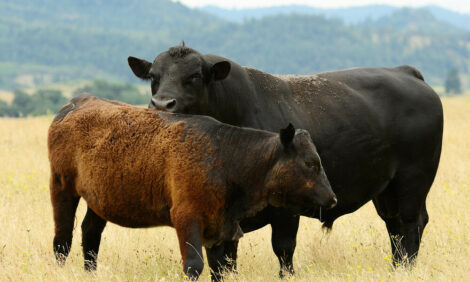



Great Challenges Ahead for Irish Beef Sector
IRELAND - Only one fifth of the country’s 60,000 beef farms are economically viable businesses when the value of family labour and capital invested in livestock and machinery is considered.Furthermore only 4,000 beef farms can be considered full-time commercial businesses. Those were the conclusions of Teagasc economists James Breen, Thia Hennessy and Fiona Thorne when they launched the medium term outlook for beef, dairy and tillage farms, today, Monday, 17 November.
The authors used the Teagasc Rural Economy Research Centre’s FAPRI-Ireland farm level model to consider the outlook for the main farming sectors and to analyse the impact of a possible World Trade Organisation (WTO) agreement. The 2007 National Farm Survey figures show that the viability of beef production in Ireland remains low, despite beef farmers currently benefiting from higher prices due to the ban on Brazilian imports and the introduction of the Suckler Cow Welfare Payment in 2008.
James Breen, Teagasc economist, said that the reliance on decoupled payments and other subsidies remains high with many beef farmers operating at a market loss. The profit from production is negative when subsidies are discounted. In fact only one third of the gross output generated by beef farms in 2006 was at a market profit. However, when compliance costs for the Single Farm Payment and REPS are considered, the proportion of profitable production increases to 76 percent. Even though all direct payments are now decoupled from production, for many farmers the most cost effective means of cross complying is to retain these unprofitable animals. A quarter of gross output generated by beef farmers is produced at a loss, even when the costs of cross compliance are considered. The analysis revealed that over half of this production is by farmers that are employed off the farm.
The outlook for beef profitability at the farm-level remains poor. It is projected that even under no policy change the percentage of viable businesses would decrease from 21 percent at present, to 10 percent by 2018, and the proportion of gross output produced at a market profit would decrease from 32 to 20 percent.
Teagasc economist Fiona Thorne said that the review of the current status of the tillage farming population in Ireland shows that 76 per cent of specialist tillage farm businesses are economically viable businesses in 2008. Furthermore it is estimated that this figure will reduce to 66 percent of producers by 2018 assuming no policy change.
Thia Hennessy, Teagasc Rural Economy Research Centre, said that dairy farmers are having a poor year following the high of 2007 with the number of economically viable farm businesses declining from 68 percent in 2007 to 53 percent in 2008. The current price cost squeeze is expected to continue into the medium term and the number of dairy farms will continue to decline between now and the time of milk quota abolition.
WTO analysis
The impact of a possible WTO agreement was also considered. Two WTO scenarios were analysed. In the first scenario it is assumed that import tariffs for all of the main commodities are cut by 70 percent. In the second scenario it is assumed that beef is designated as a sensitive product and import tariffs on beef are only cut by 23 percent with all other import tariff cut by 70 percent.
The effect of a WTO agreement where beef is not a sensitive product is particularly severe for the beef farming sector. By 2018, beef prices are projected to be almost 30 percent lower due to the agreement. At these prices less than 4 percent of the gross output generated by the current population of beef farmers would be profitable, this equates to 6 percent of beef farms being viable in 2018. While under current market conditions a large proportion of beef farmers find it profitable to retain animals in order to cross comply with the Single Farm Payment scheme, at the significantly reduced prices projected for in the WTO scenario, many farmers would find it more profitable to destock their farms.
While a scenario where beef is designated as a sensitive product still has negative impacts for the sector, the outcome is not as extreme. Under this more moderate WTO scenario the percentage of economically viable beef farms in 2018 is 9 percent compared to 10 percent under a no policy change scenario.
The difference between the EU and world cereal and dairy product prices is such that the reduction of import tariffs has a limited impact on the prices paid to farmers. As a result, the two WTO reform scenarios analysed are projected to have a minimal impact on the viability of dairy and tillage farms with the number of viable farms estimated to remain similar to that estimated for a situation where no WTO agreement is reached.
An economically viable farm is defined as one having (a) the capacity to remunerate unpaid family labour at the average agricultural wage, and (b) the capacity to provide an additional 5 per cent return on non-land assets; these include capital invested in machinery and livestock.
Further Reading
| - | You can view the full report by clicking here. |
TheCattleSite News Desk


